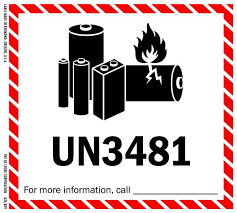Shipping Protocols for Lithium-Ion Batteries
Depending on the type, wattage, and number of batteries being shipped, the required documentation and packaging can change.
Lithium batteries are used in many electronic devices such as cameras, cell phones, medical equipment, and laptop computers. When shipping or importing lithium batteries, including those contained in or packed with devices and equipment, packaging requirements must be met and package contents must be declared.
While most lithium batteries are safe, some, particularly counterfeit and outdated ones, have overheated and caught fire. Once ignited, they can cause a chain reaction with nearby batteries creating a hazardous fire which can be challenging to suppress. This is especially concerning in air transportation and is why batteries are more highly regulated for that mode of transportation.
UN Categorization
Lithium batteries fall into one of four UN Packaging Codes, with a series of packaging instruction (PI) variants for each category.
- Lithium-ion batteries: UN3480
- Lithium-ion batteries “packed with” or “contained in” equipment: UN3481
- Lithium metal batteries: UN3090
- Lithium metal batteries “packed with” or “contained in” equipment: UN3091
A lithium-ion battery attached to a laptop would be considered "contained in", the same battery detached but in the same box as the laptop would be designated as "packed with."
Contact Mercury if You Have Any Questions About Battery Shipping
Packaging Instructions
Once the appropriate UN Code has been identified, the next step is to confirm whether your product is fit for travel and what packaging code will be required.
Lithium batteries are regulated based on the rated watt-hours for lithium ion batteries or the weight of the lithium contained in the batteries for lithium metal batteries. This information is usually marked on the battery or documented on a Safety Data Sheet from the battery manufacturer. Depending on the relevant ratings, your shipment my require additional markings, packaging, and may be precluded from certain modes of transportation.
Lithium-Ion Batteries (UN3480) Instructions
Batteries shipped independently (i.e. not contained in or with accompanying hardware) are shipped via Packaging Instructions (PI) 965 and are subject to subsection, IA, IB, or II (with section IA being the most restrictive). Most major carriers will not ship via subsection II and will require the additional care of IA or IB. If the watt-hours of a single battery being shipped are greater than 100, the package is IA. If not, the package is IB.
Portable batteries or power banks (i.e. the spare charger you carry around in your backpack) qualify as independent Lithium batteries and are categorized as UN 3480. It is important to note that power banks are *always* considered a Dangerous goods (DG) shipment that requires full DG treatment (stickers, paperwork, etc.). They also cannot be shipped Next Flight Out (NFO) and must be cargo aircraft only.
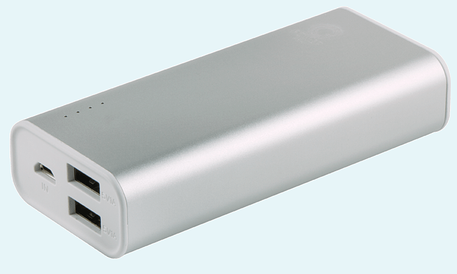
For one laptop, no markings are required. For two laptops in one box, add a UN3481 sticker. No DG paperwork necessary, but do not attach a Class 9 sticker. For three or more laptops in one box, follow DG inquiry process.
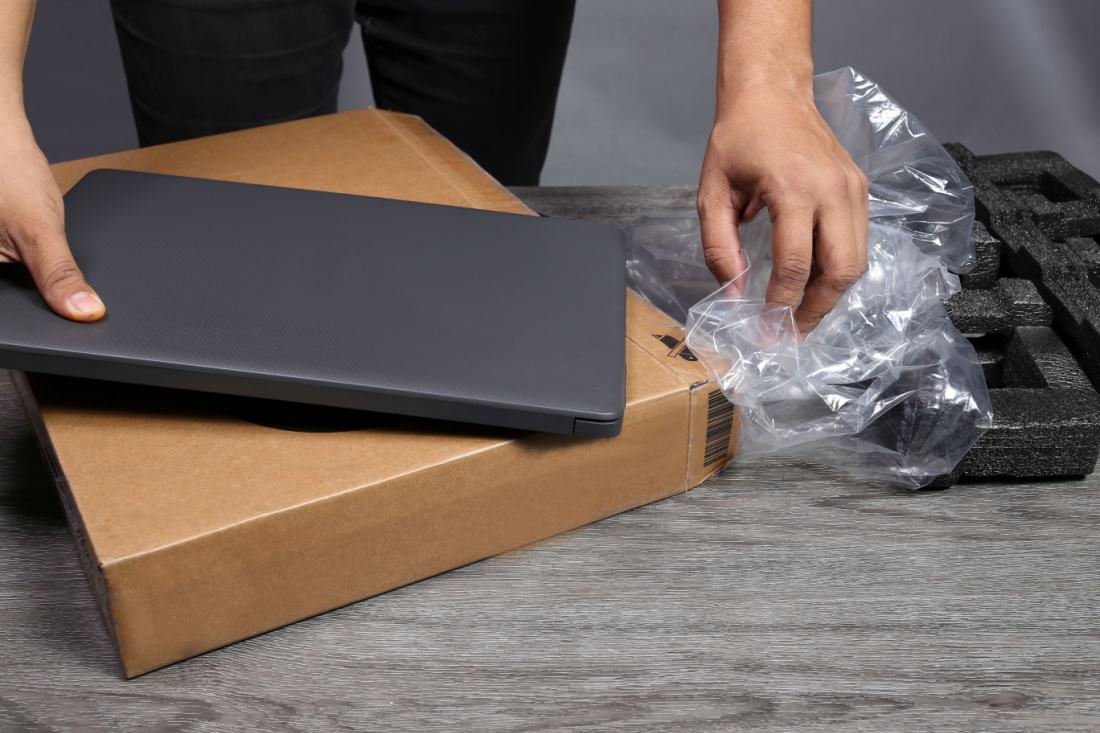
See below for details on each category:
UN3480; PI965-IA
Packaging:
- Each battery /cell must be protected against a short circuit and placed in an inner packaging that completely encloses the battery /cell, then placed in a strong rigid outer packaging.
- State of Charge (SoC) of the battery or cell must not exceed 30%.
- Cells and batteries must not be packed in the same outer packaging, or placed in an overpack with, dangerous goods classified in Class 1 (except 1.4S), Division 2.1 (flammable gases), Class 3 (flammable liquids), Division 4.1 (flammable solids) and Division 5.1 (oxidizers).
- Maximum 35 kg net quantity of lithium batteries or cells per package. Cargo Aircraft Only (CAO)
- Packing Group II performance standards.
- UN specification packaging is required.
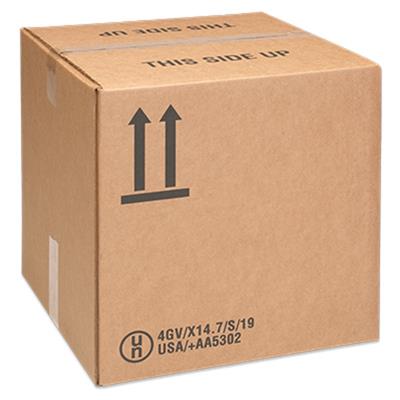
Documentation:
Shipper’s Declaration is required. The following statement must be mentioned on the (air)waybill:
"Dangerous Goods as per Attached DGD” or "Dangerous Goods as per attached Shipper's Declaration”
"Cargo Aircraft Only“ or "CAO“
Labeling / Marking:
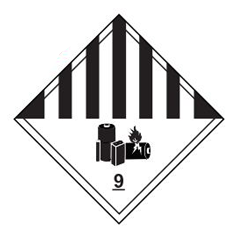
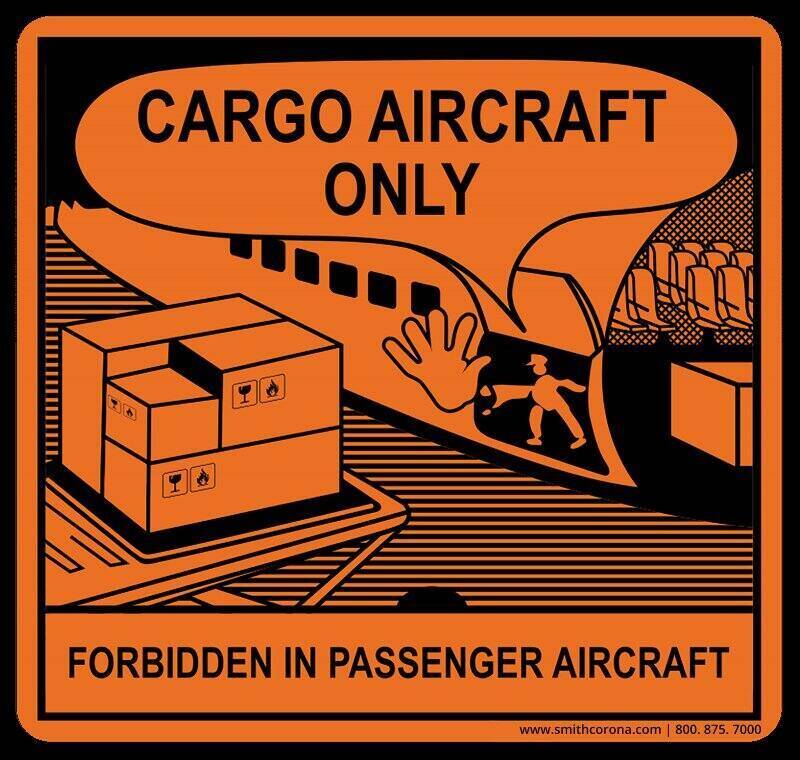
UN3480; PI965-IB
Packaging:
- Each battery /cell must be protected against a short circuit and placed in an inner packaging that completely encloses the battery /cell, then placed in a strong rigid outer packaging.
- Cells and batteries must not be packed in the same outer packaging, or placed in an overpack with, dangerous goods classified in Class 1 (except 1.4S), Division 2.1 (flammable gases), Class 3 (flammable liquids), Division 4.1 (flammable solids) and Division 5.1 (oxidizers).
- State of Charge (SoC) of the battery or cell must not exceed 30%.
- Maximum 10 kg net quantity of lithium batteries or cells per package. Cargo Aircraft Only (CAO)
- Package test: 1.2 m drop test.
Documentation:
- Shipper’s Declaration is required. The following statement must be mentioned on the (air)waybill:
- "Dangerous Goods as per Attached DGD” or "Dangerous Goods as per attached Shipper's Declaration”
- "Cargo Aircraft Only“ or "CAO“
Labeling / Marking:
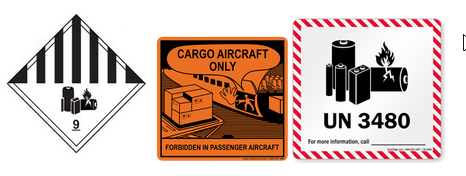
Lithium-ion batteries “packed with” or “contained in” equipment (UN3481) Instructions
Batteries shipped in or with accompanying hardware are shipped via Packaging Instructions (PI) 966 or 967 and are subject to subsection, I or II (with section I being the most restrictive). If the watt-hours of a single battery being shipped are greater than 100, the package is I. If not, the package is II.
See below for details on each category:
UN3481; PI966-I
Packaging:
- Cells and/or batteries must be completely enclosed in inner packaging then placed in a strong rigid outer packaging; or must be completely enclosed in inner packaging then placed with equipment in a strong rigid outer packaging. The equipment must be secured against any movement within the outer packaging and must be equipped with an effective means of preventing accidental activation.
- Maximum number of batteries /cells per package = those necessary to power the equipment plus 2 spares sets. (A “set” of cells or batteries is the number of individual cells or batteries that are required to power each piece of equipment).
- Maximum net quantity of lithium batteries or cells per package is 5 kg for "Passenger and Cargo Aircraft” (PAX) and 35 kg for "Cargo Aircraft Only" (CAO) shipments.
- Package test: Packing Group II performance standards.
- UN specification packaging is required.

Documentation:
- Shipper’s Declaration is required. The following statement must be mentioned on the air waybill:
- "Dangerous Goods as per Attached DGD” or "Dangerous Goods as per attached Shipper's Declaration”
- "Cargo Aircraft Only“ or "CAO“ (only when CAO is chosen)
Labeling / Marking:

UN3481; PI966-II
Packaging:
- Cells and/or batteries must be completely enclosed in inner packaging then placed in a strong rigid outer packaging; or must be completely enclosed in inner packaging then placed with equipment in a strong rigid outer packaging.
- The equipment must be secured against any movement within the outer packaging and must be equipped with an effective means of preventing accidental activation.
- Maximum number of batteries or cells per package = those necessary to power the equipment plus 2 spares sets. (A “set” of cells or batteries is the number of individual cells or batteries that are required to power each piece of equipment)
- Maximum net quantity of lithium batteries or cells per package is 5 kg for either „Passenger and Cargo Aircraft” or „Cargo Aircraft Only “shipments.
- Package test: 1.2 m drop test.
Documentation:
- Shipper’s Declaration is required. The following statement must be mentioned on the (air)waybill:
- "Lithium ion batteries in compliance with Section II of PI966"
Labeling / Marking:
